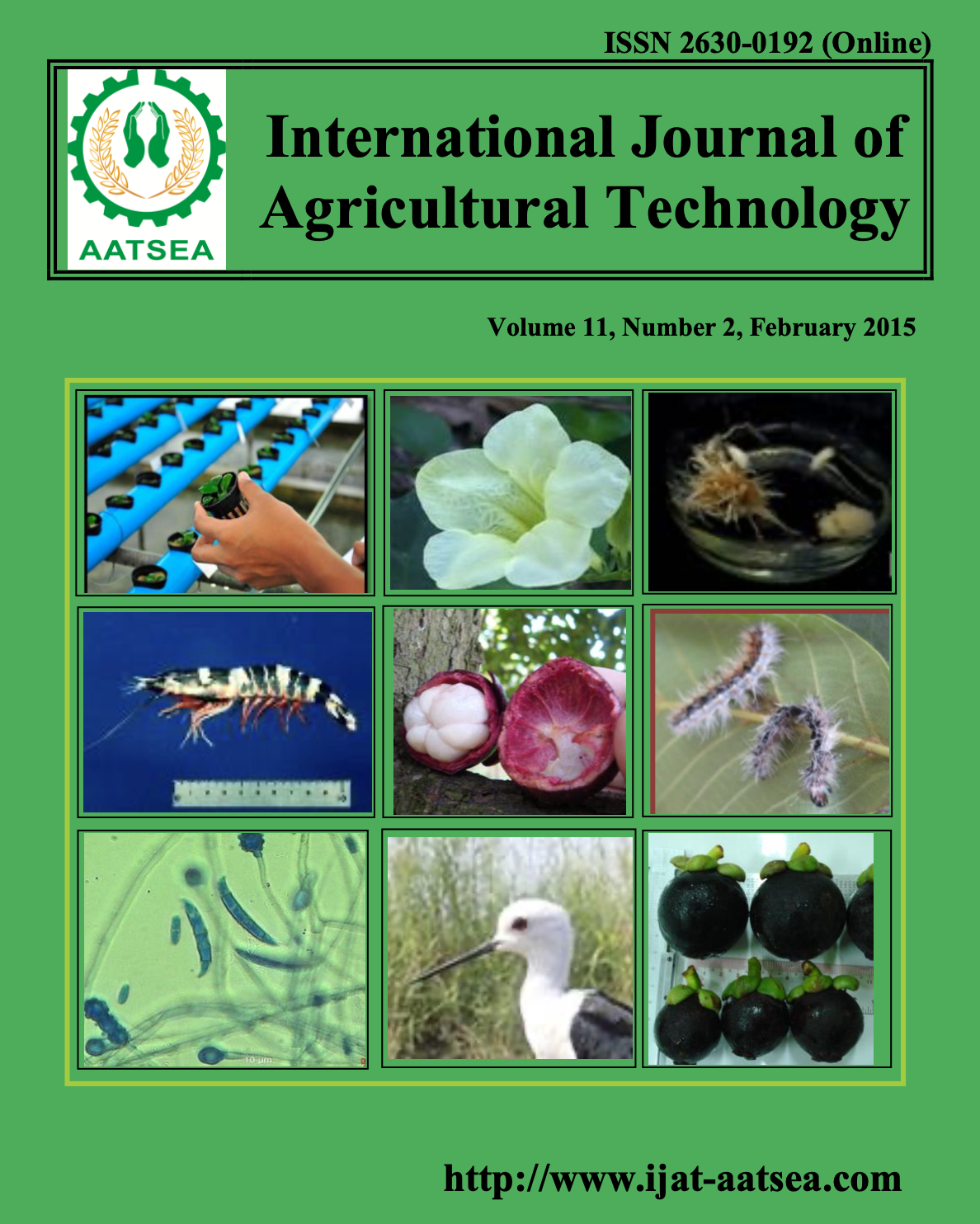Gender identification of Himantopus himantopus using PCR-based method.
Main Article Content
Abstract
The black-winged stilt (Himantopus himantopus: Recurvirostridae) has a wide distribution in nature. In Thailand, there are residents and migratory birds. The adult birds have very long pink legs and black wings. Crown and hindneck patterns vary from white to dusky-grey. In general, the gender can be identified by crown and hindneck color, white in female and black in male. However, in breeding season (April - June) of resident bird at Bung Boraphet where the largest freshwater swamp in central Thailand, most of their crown and hindneck are white. So, this species are not clearly sexually dimorphic and the color of their crown and hindneck are not directly correlated with sex. In this work, a molecular approach was used to assess differences in coloration of feathers in relation to gender. DNA was amplified from the chromo-helicase-DNA-binding (CHD) gene that located on both Z (CHD-Z) and W (CHD-W) chromosomes. Using FTA®card and genomic DNA which extracted from a small volume of blood samples were used in this experiment. The resulting PCR products from 2550F/2718R primer showed fragments on a conventional agarose gel electrophoresis with size differences ranging from 150 bp between the two ZW alleles. Males were identified by the presence of a single band about 650 bp (CHD-Z) and females were identified by the presence of a second additional fragment length of approximately 500 bp (CHD-W). For the resident bird included 32 white and 2 black head, female: male were 18: 16 which 2 black heads are male. On the other hand, the migratory bird included 32 white head, 12 black hindneck, 43 grey head and 5 grey crown. The migratory bird includes 37 female and 46 male. Our results showed clear evidence for a sex- related decrease in the color on the heads of black-winged stilt.
Article Details

This work is licensed under a Creative Commons Attribution-NonCommercial-NoDerivatives 4.0 International License.
References
Brumfield, R. T. (2010). Speciation genetics of biological invasions with hybridization. Molecular Ecology 19:5079-5083.
Cerit, H. and Avanus, K. (2006). Sex identification in avian species using DNA typing methods. World’s Poultry Science Journal 63:91-99.
Faux, C. E., McInnes, J. C. and Jarman, S. N. (2014). High-throughput real-time PCR and melt curve analysis for sexing Southern Ocean seabirds using fecal samples. Theriogenology 81:870-874.
Fridolfsson, A. K. and Ellegren, H. (1999). A simple and universal method for molecular sexing of non-ratite birds. Journal of Avian Biology 20:116-121.
Griffiths, R., Double, M. C., Orr, K. and Dawson, R. J. (1998). A DNA test to sex most birds. Molecular Ecology 7:1071-1075.
Kahn, N., John, J. S. and Quinn, T. W. (1998). Chromosome-specific intron size differences in the avian CHD gene provide an efficient method for sex identification in birds. The Auk 115:1074-1078.
Lekagul, B. and Round, P. D. (1991). A Guide to the Birds of Thailand. Saha Karn Bhaet Co., Ltd., Bangkok. pp. 457.
Morinha, F., Cabral, J. A. and Bastos, E. (2012). Molecular sexing of birds: A comparative review of polymerase chain reaction (PCR)-based methods. Theriogenoloqy 78:703-714.
Vucicevic, M., Pavlovic, M. S., Stevanovic, J., Bosnjak, J., Gajic, B., Aleksic, N. and Stanimirovic, Z. (2012). Sex determination in 58 bird species and evalution of CHD gene as a universal molecular marker in bird sexing. Zoo Biology 32:269-276.
Watson, H. K., Mogg, R. J., Bond, J. M. and Durell, S. E. A., le V. dit. (2004). Sexing Eurasian Oystercatchers Haematopus ostralegus from breast feathers collected when ringing. Wader Study Group Bull 105:87-89.


